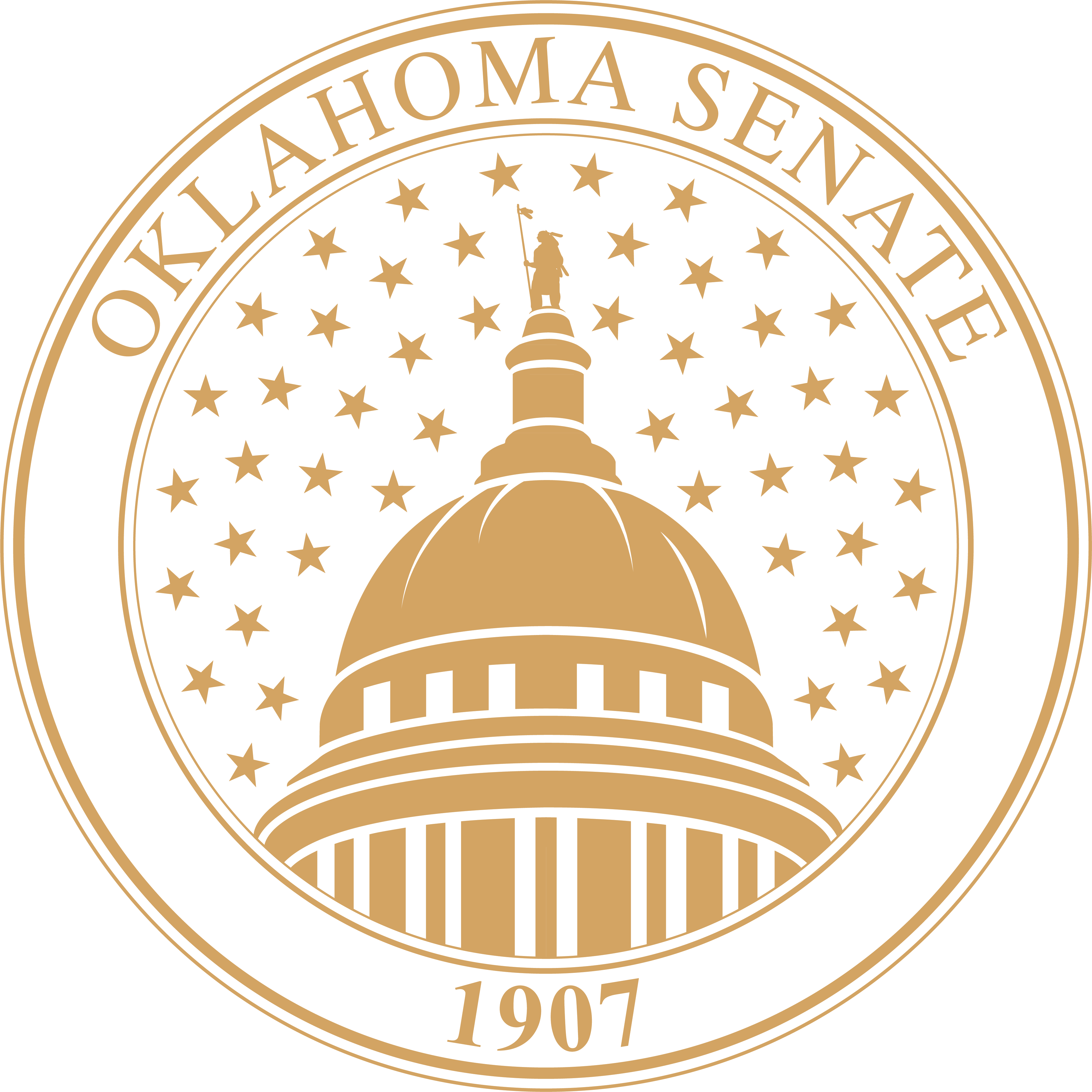In order to provide equal access and equal opportunity to people with diverse abilities, this site has been designed with accessibility in mind. Click here to view
For the week of Monday, February 2, 1998 - Thursday, February 5, 1998
Monday, February 2nd
- The Oklahoma Senate and House of Representatives formally convened the second session of the 46th Oklahoma Legislature. The session will conclude at 5:00 P.M. on Friday, May 29th.
- Governor Keating issued the annual state of the state address to a joint session of the Oklahoma Legislature. The Governor announced his 1998 legislative agenda, listing four top priorities: 1) Hog and Chicken Industry Regulation; 2) Truth-in-Sentencing; 3) Education; 4) Tax Cuts. Among other things, the Governor has proposed a one-year moratorium on hog and chicken facility licensing, an overhaul of truth-in-sentencing, school vouchers and a $777 million income tax cut.
- Senate leaders raised questions about the Governor's tax cut program, citing concerns about available revenue and existing commitments to road construction and prison expansion. According to the State Equalization Board, there is $160 million in growth revenue available for appropriation, but Senate numbers indicate there are approximately $184 million in existing commitments. The two big ticket items are prisons costs and highway construction.
Tuesday, February 3rd
- Backers of the corporate hog industry rallied at the State Capitol, urging Governor Keating to drop his call for a one-year moratorium on the licensing of hog facilities. The Legislature is considering several proposals that would place stricter regulations on the industry.
- Senator Darryl Roberts questioned some of the methods used to balance the executive budget offered by Governor Keating. The executive budget is based on the assumptions that the Oklahoma Tax Commission can collect an additional $16.5 million from taxpayers by working harder, that "purchasing reform" will save the state $13 million and that $44 million intended for state pensions can be used as general revenue. Senator Roberts said he is opposed to raiding the pension funds.
- The Senate Finance Committee approved the nomination of Jerry Johnson for the position of Oklahoma Tax Commissioner.
- The House Higher Education Committee rejected an amendment that would have given Langston University a four-year campus in Tulsa. Langston is currently part of a four-school consortium called Rogers University.
Wednesday, February 4th
- Senator Keith Leftwich and Senator Herb Rozell held a public hearing on their proposals to bring drivers' education back into the public schools. The legislation on the subject would offer incentives to schools encourage drivers' ed courses.
- Contracts finalizing the merger of University Hospitals and Columbia HCA were signed at the State Capitol.
- A Senate analysis requested by Senator Cal Hobson indicated Governor Keating's proposed income tax cut would disproportionately reward wealthy Oklahomans. According to the analysis, more than one-third of the tax relief would go to just 5 percent of the taxpaying population, those who make more than $100,000 a year.
Thursday, February 5th
- The House and Senate met briefly before adjourning for the weekend.
Economic Highlights
Economists are forecasting continued economic growth for Oklahoma this year. According to the 1998 Oklahoma Economic Outlook report by Oklahoma State University, Oklahoma will continue its trend of outpacing the national average in employment growth.
OSU researchers predict state employment will grow by 2.2 percent, slightly ahead of the forecasted national growth rate of 1.9 percent. That translates into a net increase of 30,000 additional jobs. Oklahoma City is projected to grow by 2.3 percent; Tulsa by 2.9 percent. The growth will help keep unemployment low.
Retail spending is up in Oklahoma. During the month of January, spending rose by 3.8 percent over the same period the previous year. According to Telecheck, Oklahoma City's retail spending increased by 4.6 percent; Tulsa's rose by 2 percent.
 Oklahoma Senate
Oklahoma Senate

